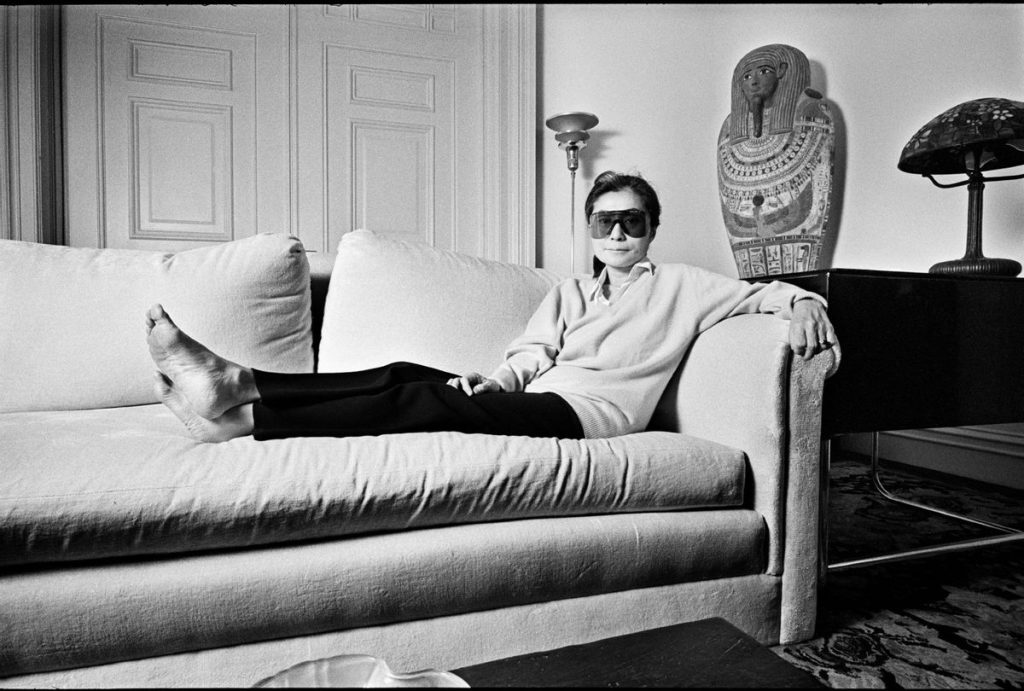Yoko Ono: A Life Beyond the Beatles Myth
In 1980, a young journalist named David Sheff secured a career-defining interview with John Lennon and Yoko Ono. Fresh off a five-year hiatus, the iconic couple were poised to re-enter the music scene. Sheff’s in-depth conversation with Lennon, which included a comprehensive examination of his musical journey, became tragically prophetic. Weeks later, Lennon’s life was cut short by an assassin’s bullet, transforming Sheff’s interview into a poignant final testament to the musician’s legacy. In the aftermath of this tragedy, a unique friendship blossomed between Sheff and Ono. This connection would eventually lead Sheff to embark on a challenging and deeply personal project: writing Ono’s biography.
The task of chronicling Ono’s life presented Sheff with a significant ethical dilemma. His close relationship with the artist provided unparalleled access and insight, yet it also raised the question of objectivity. Could he, as a friend, tell her story with unvarnished truthfulness? Sheff acknowledged the inherent conflict but ultimately resolved to present a complete and unfiltered portrait of Yoko Ono, warts and all. He set aside the temptation of idealized friendship and chose instead to meticulously reconstruct events, dialogues, and experiences, striving for an accurate representation of her complex and often misunderstood life.
"Yoko," the resulting biography, is a testament to Sheff’s commitment to journalistic integrity. He delves into Ono’s formative years in pre-war Japan, revealing the privileged yet complex upbringing that shaped her early artistic and philosophical inclinations. The book shines in its exploration of her creative evolution, particularly her audacious involvement with Fluxus, the avant-garde art movement that embraced performance as its central tenet. Sheff doesn’t shy away from Ono’s missteps and failures, exposing the vulnerabilities and fears that lay beneath her often-controversial public persona. He portrays her as a multi-faceted individual, highlighting not only her flaws but also her profound wisdom, wit, resilience, compassion, and undeniable artistic genius.
A central focus of the biography is the evolution of Ono’s relationship with John Lennon. Sheff provides a meticulous account of their courtship and the intense public scrutiny that followed. He unflinchingly addresses the racism and misogyny that Ono endured, particularly from Beatles fans who blamed her for the band’s eventual breakup. Sheff challenges this long-held narrative, arguing that Ono, far from being a destructive force, actually played a crucial role in extending the Beatles’ creative lifespan. He contends that Lennon’s devotion to Ono kept him engaged with the band during the creation of "Let It Be" and "Abbey Road," albums that might never have materialized had Lennon left sooner. This perspective reframes Ono’s role in music history, transforming her from a scapegoat into a stabilizing influence during a turbulent period for the iconic band.
Sheff’s biography dismantles the simplistic and often cruel caricature of Yoko Ono that has persisted for decades. It delves into the complexities of her personality, her artistic contributions, and her enduring relationship with Lennon. He doesn’t shy away from the controversies that have surrounded her, but he places them within a broader context, allowing readers to understand the cultural and historical forces at play. Through meticulous research and insightful analysis, Sheff paints a nuanced portrait of a woman who has been both revered and reviled, challenging readers to reconsider their preconceived notions.
"Yoko" is not just a biography of a singular artist; it’s also a reflection on how we perceive and judge cultural icons. By meticulously reconstructing Ono’s life story, Sheff encourages us to question the narratives we’ve accepted and to look beyond the surface of fame and notoriety. The book serves as both a compelling biographical account and a valuable lesson in critical thinking, reminding us that even the most familiar figures can reveal surprising depths when examined with an open mind and a commitment to truth. It’s an essential read for Beatles enthusiasts, music lovers, and anyone interested in the intersection of art, fame, and cultural history. It challenges us to re-evaluate our understanding of a pivotal era in music and to appreciate the complex and often misunderstood woman at its heart.


